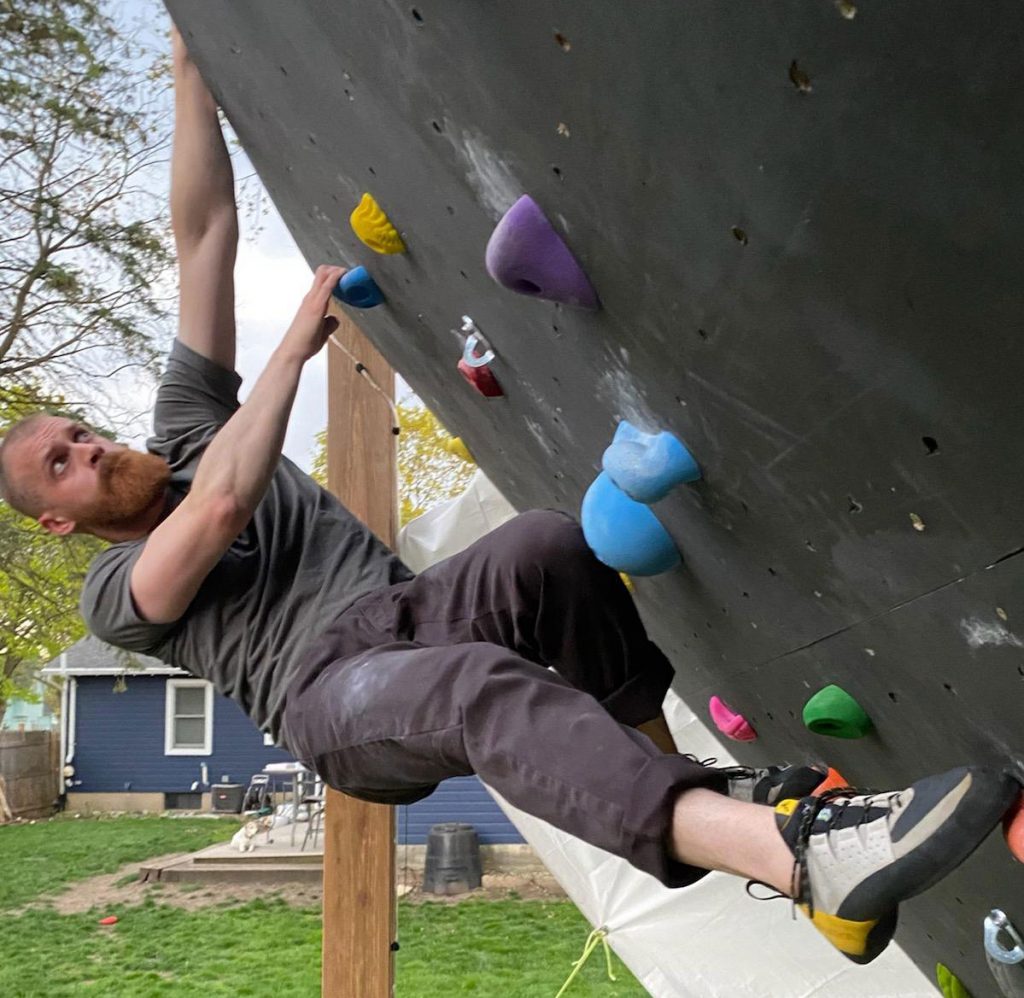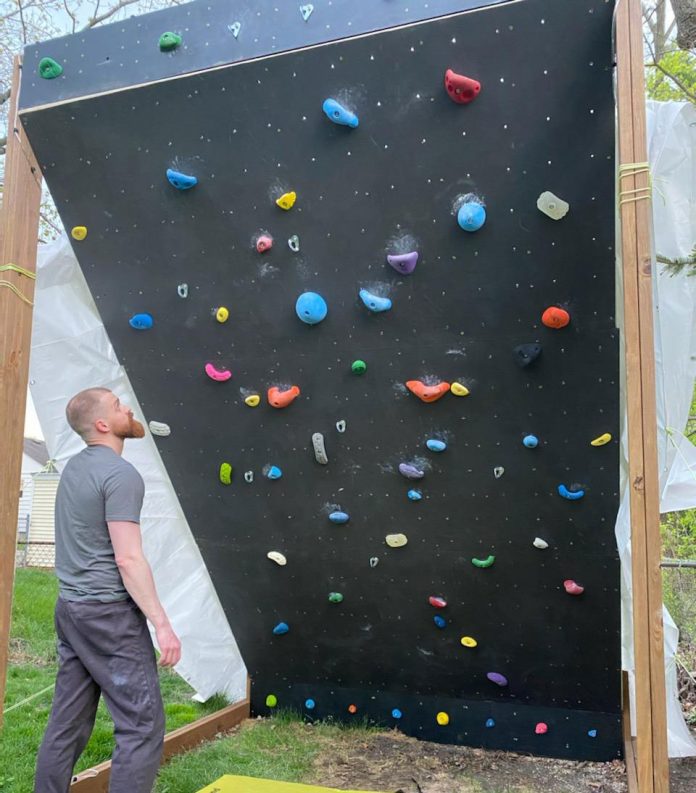Jordan Graves // Batavia, IL
When did you build your wall? Was it a COVID baby?
After a lengthy planning period, the wall finally went up in the summer/fall of 2020. Even though having my very own wall was something I always imagined, I guess the pandemic finally gave me the excuse, social limitations, and the motivation I needed to see it through and make it real.
How long did it take you to build and what did that time look like?
Actual working time for the build was probably no more than 36 hours, which certainly would’ve been faster had my friends and I been blessed with any real carpentry or architectural skills. All that time was spread out over many weeks, not just because we were all still busy working, but also because my wife and I had a brand-new human baby to raise while trying to raise the COVID baby.
Not including holds and padding, how much did it cost you to build? Any surprises there?
Lumber and materials ran me around $800 (USD). I figured it’d be somewhat pricey since literally every piece of lumber and metal is either pressure-treated or weather-resistant, but I definitely paid peak pandemic prices so that ended up a little more than I expected.
What are you doing for padding?
I explored the concept of dedicated, permanent padding, but so far crash pads are proving most cost-effective and trustworthy.
What was your primary incentive for the wall? Did anything in particular inspire your wall design?
I initially started seriously considering the build when my gym, which is really nice but is already a bit of a drive away, had to shut down due to the pandemic. What really lit the fuse for me though was the birth of my daughter; out here in the Midwest-suburban flatlands, I really needed something nearby, that I could use with friends and family, and that wouldn’t cost too much every month, and a wall of my own was the answer.
I took a lot of ideas from a lot of different builds (thanks Metolius, YouTube, and CBJ’s HWOW winners), but this final form is ultimately my brainchild.
What was the most difficult aspect of the design and build?
There were actually a few aspects that were equally difficult, but it all stems from my home and environment. My garage and basement are both too limited for much more than a hangboard, so I knew right away that any extensive buildouts would be outside. That means I’d need something that can stand up equally well to the crispy July humidity and the annual February cold snaps. I’m also 6’3″, so I knew I’d need something hard that would let me stretch out. Finally, my infinitely supportive wife insisted that not only should I dive into this with real commitment and gusto, but I should design it to be easily dismantled, moved, and reassembled if we end up moving. After who knows how many rounds of planning, I finally came up with a mobile-ready, all-weather, 40-degree, 12-foot-high playground in my backyard that is (only just) visible from the street.
What would you do differently?
Aside from the fact that I should’ve built this thing years ago, my biggest regret is not taking the time to better source my materials. I know I could’ve spent a ton more on the project and I’m not disappointed in the result whatsoever, but I also know if I had timed the purchasing better or really worked for deals, I might’ve saved more money for holds or add-ons.
Did you make any mistakes along the way or choose to re-do any aspects? If so, what?
The only real mistake I made was underestimating the amount of flexion a pressure-treated piece of wood can undergo as it dries, before securely joining it to the others. Those small variations led to my third ply having shifted about an inch and a half to the side. The entire structure is over-engineered to the point that it doesn’t even creak after the Tom Cruise-iest of double-dyno hero moves, but that slightly off-center ply does irk me from time to time.
What is your favorite aspect?
I love everything about the wall, but the thing I love most is that it’s mine to make how I see fit. I can set my own burly (for me anyway) boulder problems, ease up with gentler circuits and bolt hangers for sport and clipping practice, and now that the groovy lighting is in place, I can get out there anytime I’m home, day or night.
How often do you use the wall? Do you think you’ll still use it as much when all of the gyms open back up?
Ever since the last screw went in, I’ve been reliably on that thing twice a week, and I’ve kept that pace as long as the average temperature is at least close to freezing or more. Even when my usual gym fully opens and I make my way over there from time to time, I know the home wall will still be a regular fixture in my training and recreation.
Any words of wisdom to aspiring homewallers?
You can do what I did and thoroughly plan it out using free, online design software, come up with a materials list down to the last t- nut, and set an accurate-enough budget to pass any audit, but ultimately the thing won’t build itself; get out there and make it happen!











